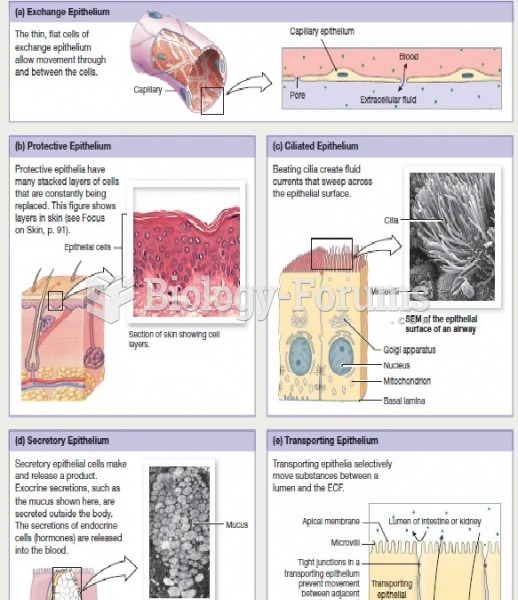Answer to Question 1
Knopf has identified several types of behavior patterns that helping professionals choose in dealing with bureaucracies.
The warrior leads open campaigns to destroy and malign the system. A warrior discounts the value of the system and often enters into a win-lose conflict. She or he generally loses and is dismissed.
The gossip is a covert warrior who complains to others (including clients, politicians, and the news media) about how terrible the system is. A gossip frequently singles out a few officials to focus criticism on. Bureaucratic systems often make life very difficult for the gossip by assigning distasteful tasks, refusing to promote, giving very low salary increases, and perhaps even dismissing.
The complainer resembles a gossip but confines complaints to other helping persons, to in-house staff, and to family members. A complainer wants people to agree in order to find comfort in shared misery. Complainers want to stay with the system, and they generally do.
The dancer is skillful at ignoring rules and procedures. Dancers frequently are lonely. They are often reprimanded for incorrectly filling out forms, and they have low investment in the system or in helping clients.
The defender is timid and dislikes conflict and therefore defends the rules, the system, and bureaucratic officials. Defenders often are supervisors and are viewed by others as being bureaucrats.
The machine is a bureaucrat who takes on the orientation of the bureaucracy. Often a machine has not been involved in providing direct services for years. Machines are frequently named to head study committees and policy groups and to chair boards.
The executioner attacks persons within an organization with enthusiasm and vigor. An executioner usually has a high energy level and is impulsive. He or she abuses power by indiscriminately attacking and dismissing not only employees but also services and programs. Executioners have power and are angry (although the anger is disguised/denied). They are committed neither to the value orientation of helping professionals nor to the bureaucracy.
Answer to Question 2
There are basic structural conflicts between helping professionals and the bureaucratic systems in which they work. Helping professionals place a high value on creativity and change. Bureaucracies resist change and are most efficient when no one is rocking the boat. Helping professionals seek to personalize services by conveying to each client. Bureaucracies are highly depersonalized, emotionally detached systems that view every employee and every client as a tiny component of a large system. In a large bureaucracy, employees don't count as persons-only as functional parts of a system.
Any of these differences in value orientations can become an arena for conflict between helping professionals and the bureaucracies in which they work. Knopf has concisely summarized the potential areas of conflict: The trademarks of a BS (bureaucratic system) are power, hierarchy, and specialization; that is, rules and roles. In essence, the result is depersonalization. The system itself is neither good nor bad; it is a system. It is efficient and effective, but in order to be so it must be impersonal in all of its functionings. The hallmark of the helping professional is a highly individualized, democratic, humanized, relationship-oriented service aimed at self-motivation. The hallmark of a bureaucratic system is a highly impersonalized, valueless (amoral), emotionally detached, hierarchical structure of organization. The dilemma of the HP (helping person) is how to give a personalized service to a client through a delivery system that is not set up in any way to do that. Many helping professionals respond to these orientation conflicts by erroneously projecting a personality onto the bureaucracy. They describe it using expressions such as red tape, officialism, uncaring, cruel, the enemy. Officials of the bureaucracy may be viewed as paper shufflers, rigid, deadwood, inefficient, and unproductive. Knopf states, The HP (helping person) may deal with the impersonal nature of the system by projecting values onto it and thereby give the BS (bureaucratic system) a personality'.
Knopf has listed 66 tips on how to survive in a bureaucracy. Some of the most useful suggestions are summarized here:
1. Whenever one's needs, or the needs of clients, are not met by the bureaucracy, the following problem-solving approach should be used: (a) Precisely identify the needs (or the needs of clients) that are in conflict with the bureaucracy; this step is defining the problem. (b) Generate a list of possible solutions. Be creative in generating a wide range of ideas. (c) Evaluate the merits and shortcomings of the possible solutions. (d) Select a solution. (e) Implement the solution. (f) Evaluate the solution.
2. One should learn how bureaucracy is structured and how it functions. Such knowledge will reduce fear of the unknown, make the system more predictable, and help in identifying rational ways to best meet the needs.
3. One should remember that bureaucrats are people, too, and they have feelings. Communication gaps are often most effectively reduced if one treats them with as much respect and interest as clients are treated.
4. If one is at war with the bureaucracy, one should declare a truce. The system will find a way to dismiss one if one remains at war. With a truce, one can identify and use the strengths of the bureaucracy as an ally, rather than having the strengths used against one as an enemy.
5. One should know one's work contract and job expectations. If the expectations are unclear, one should seek clarity.
6. One should continue to develop one's knowledge and awareness of specific helping skills.
7. One should seek to identify one's professional strengths and limitations.
8. Be aware that you can't change everything, so stop trying. In a bureaucracy, focus your change efforts on those aspects that most need change and that you also have a fair chance of changing. Stop thinking and complaining about those aspects you cannot change. It is irrational to complain about things that you cannot change or to complain about those things that you do not intend to make an effort to change.
9. One should learn how to control one's emotions in interactions with the bureaucracy. Emotions that are counterproductive (such as most angry outbursts) particularly need to be controlled. Doing a rational self-analysis on unwanted emotions is one way of gaining control of them. Learning how to respond to stress in personal life will also prepare one to handle stress better at work.
10. One should develop and use a sense of humor. Humor takes the edge off adverse conditions and reduces negative feelings.
11. One should learn to accept one's mistakes and perhaps even laugh at some of them. No one is perfect.12. One should take time to enjoy and develop a support system with coworkers.
13. One should acknowledge one's mistakes and give in sometimes on minor matters.
14. One should keep oneself physically fit and mentally alert and should learn to use approaches that will reduce stress and prevent burnout.
15. One should leave work at the office.
16. No matter how high you rise in a hierarchy, maintain direct service contact. Direct contact keeps you abreast of changing client needs, prevents you from getting stale, and keeps you attuned to the concerns of employees in lower levels of the hierarchy.
17. One should not try to change everything in the system at once.
18. One should identify one's career goals and determine whether one can be met within this system. If the answer is no, then one can (a) change goals, (b) change the bureaucracy, or (c) seek a position elsewhere in which one's goals can be met.







